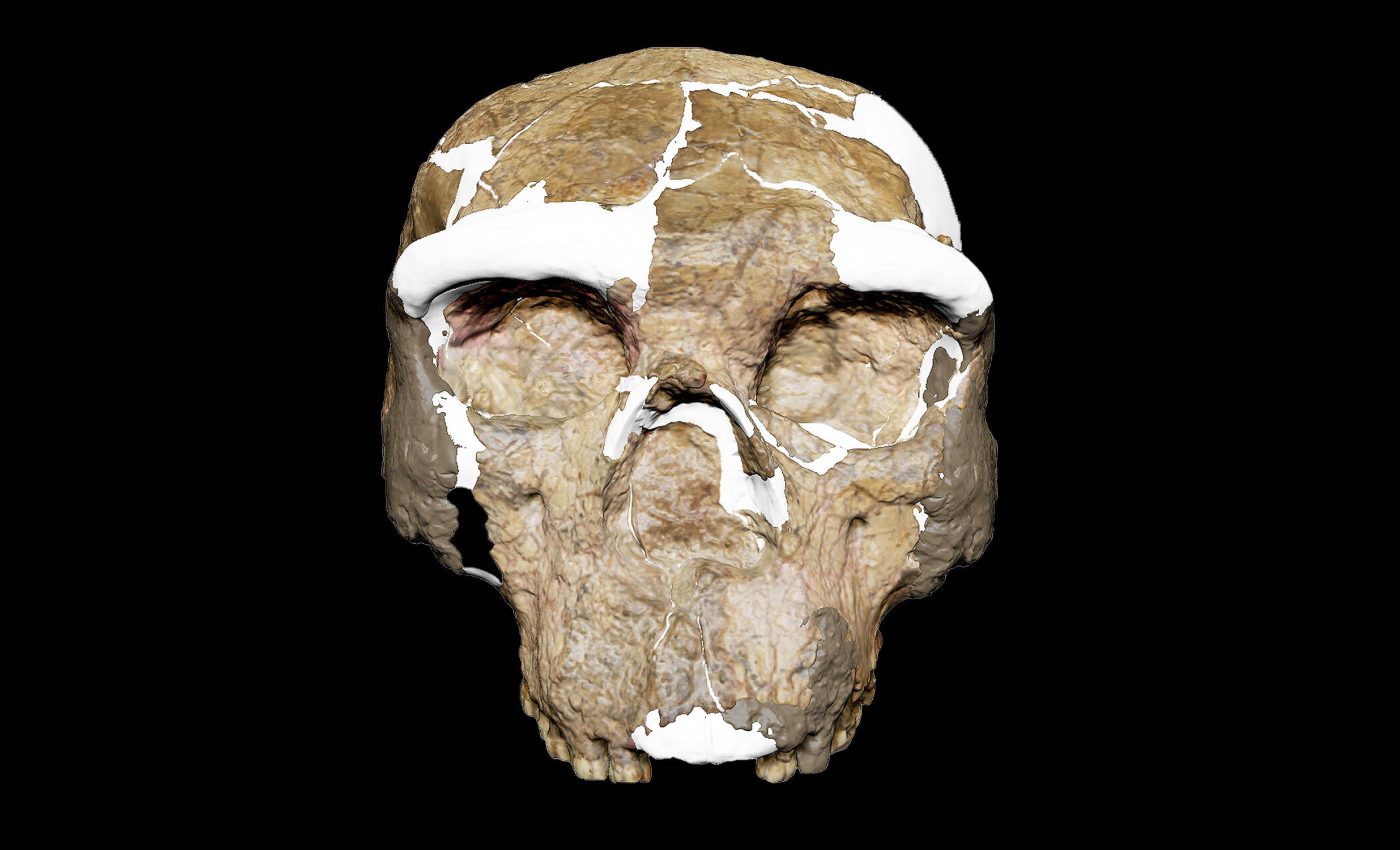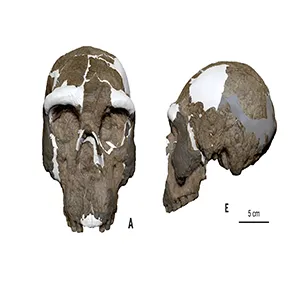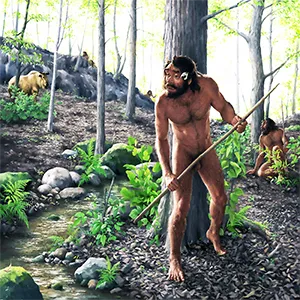
New study of a 1-million-year-old crushed skull redefines human evolution
The story begins in China, almost a million years ago, when a human-like skull, now called Yunxian 2, became buried in river soil.
When scientists first uncovered it, some decades ago, excitement quickly turned into frustration. Time had crushed and twisted the skull to the point where details of its true shape were undiscernible.
With no true idea of how the head was shaped, scientists couldn’t agree on where this ancient human ancestor belonged on the family tree.
Technology finally gave the fossil a second chance. Using CT scans, researchers digitally “uncrushed” the skull, pulling the fragments apart and fitting them back together.
The restored head shows a surprising mix of old and new traits and points to a branch of the human family closely tied to the mysterious Denisovans.
That finding suggests our own ancestors may have split from other human groups much earlier than many researchers thought.
Yunxian 2 skull shows mixed features
Once rebuilt, Yunxian 2 revealed a blend of old and new traits. The skull stretched long and low, echoing earlier humans like Homo erectus.
Heavy brow ridges shadowed the eyes. The forehead sloped back. Yet the cheekbones rose high, and the nose opening looked wide, reminiscent of later humans.
The brain size told a similar story. At about 1143 cubic centimeters (about 69.7 cubic inches), it sat between older and newer humans; too big for Homo erectus, too small for modern Homo sapiens.
This middle ground showed a hominin caught in transition. It carried echoes of the past while hinting at the future.
How the Yunxian 2 skull compares
To place the Yunxian 2 skull, scientists compared it with more than 170 other skulls. Instead of guessing, they measured hundreds of points on each bone.
The analysis showed Yunxian did not stand alone. It grouped with other Asian fossils like Harbin, Dali, and Jinniushan. Together, those fossils form what researchers now call the Homo longi clade.
This clade matters because it likely includes the Denisovans. Denisovans were ancient humans known mostly from DNA found in Siberia. They were not Neanderthals and not Homo sapiens but something else.
The Yunxian skull may represent one of the earliest members of that branch. It links bones with genes and fills a gap in the story.

Yunxian skull marks early splits
The study also tried to time when different groups branched off. The results were striking. According to their models, the longi clade began about 1.2 million years ago.
The branch that would lead to Homo sapiens (the sapiens clade) appeared around 1.02 million years ago.
Both came from a split that happened roughly 1.32 million years ago. Neanderthals broke away even earlier, about 1.38 million years ago.
That timing places Yunxian at a critical moment. It lived right as the great divisions in the human family tree were forming.
Its mixture of features fits perfectly with that role. It may stand close to the common ancestor of our species and the Denisovans.
Asia’s role becomes clearer
For a long time, most attention given to human origins focused on Africa and Europe. Asia often looked like the background of the story.
The Yunxian skull changes that view. It shows Asia was not only a passageway but a center of action. Populations here were shaping the very lines that would lead to us.
The fossil proves that Asia held more than wandering migrants. It held humans experimenting with new forms, new faces, and new brain sizes.
Those experiments mattered. Without them, our own lineage might look very different today.
Speed of evolution
Another surprise comes from the pace. The gap between Yunxian’s age and the estimated start of both the longi and sapiens clades is small.
Evolution was moving fast. Groups were splitting, adapting, and exploring new possibilities in relatively short spans of time.
That speed explains why fossils from this period look so varied. Some skulls resemble older forms, others lean toward modern ones.
Yunxian sits between those extremes, capturing a moment when human evolution was branching quickly.
Important lessons from Yunxian 2
Reconstructing Yunxian 2 did more than fix a broken skull. It corrected a broken story.
For years, many believed Homo sapiens and our close relatives only appeared late, maybe half a million years ago.
This study pushes the origins back much further. Our roots, and the roots of the Denisovans, run at least a million years deep.
The Yunxian fossil shows that human evolution was not a straight climb toward us. It was a tangled bush with many branches.
Some branches vanished. Others endured. Yunxian stands at a fork, preserving a face that connects the past to our present.
Imagine standing in front of Yunxian 2. The face looks unfamiliar yet not alien. It carries hints of us, hints of something lost, and the weight of deep time.
After decades of silence, this fossil finally speaks. Its message is simple. The story of humanity is older, richer, and more complex than we once believed.
The study is published in the journal Science.
—–
Like what you read? Subscribe to our newsletter for engaging articles, exclusive content, and the latest updates.
Check us out on EarthSnap, a free app brought to you by Eric Ralls and Earth.com.
—–














